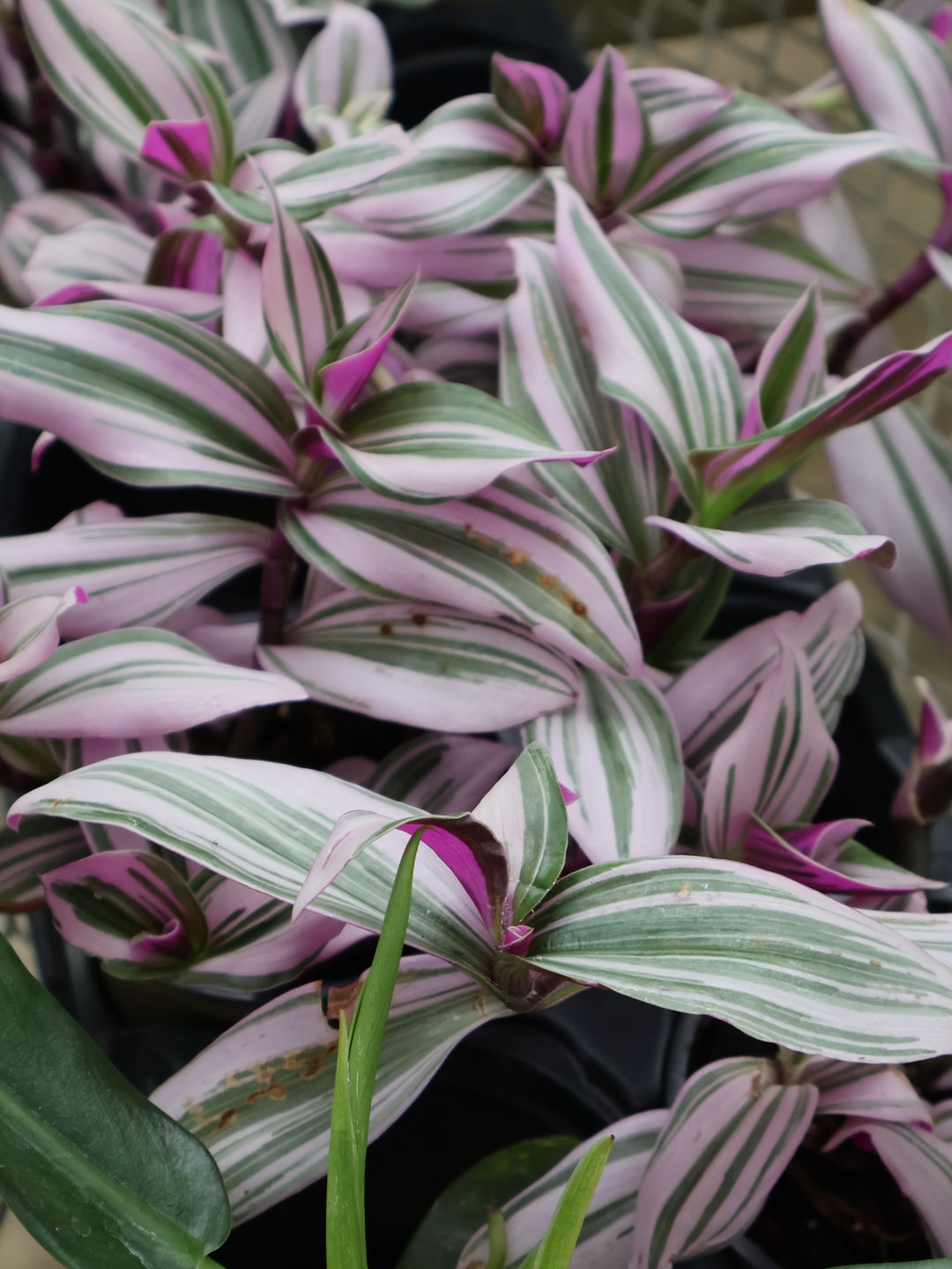Christmas Cactus help bring cheer to the holidays
Dear Friends,
Looking for some bright colors to help celebrate the season? The varied array of colors of the Christmas cactus may be your answer. Christmas cactus are available in shades of yellow to orange, to hot pink, rose, peach, lavender, cream, white or red.
You may know these plants as Easter Cactus or Thanksgiving cactus aptly named based on their bloom time. This popular winter flowering houseplant makes a great addition to nearly any indoor area. Christmas cactus are easy to take care of and make great holiday gifts. An analysis of the shape of the flattened stem segments, called phylloclades, will help to determine if you have a Thanksgiving or Christmas Cacti. Thanksgiving cactus will have 2-4 saw tooth serrations along the margins. Christmas cacti have more of a rounded margin. When blooming occurs, the color of the pollen on the anthers will dictate what type of cacti you have. Thanksgiving cactus are yellow while Christmas cactus are purplish-brown.
Christmas cactus adapt easily to most lighting conditions. You will find more blossoming in brighter locations but be careful not to place it in direct sun. Too much sun can cause leaves to scorch. Ideal temperatures for this plant are between 60-70 degrees. It also seems holiday cacti which are pot bound produce heavier amounts of flowers. Repotting should be done approximately every 3 years or so.
As for watering, water thoroughly, then allow to dry slightly between waterings. Do not let soil become waterlogged. Once flower buds are set, Christmas cactus like an evenly moist soil. to avoid bud drop. Christmas cactus also enjoy high humidity. Place your plant on top of pebbles in a saucer filled with water to achieve this. Do not allow plants to sit in water as this will rot the roots and lead to the demise of your cactus. Fertilize every two to three weeks with a mild water soluble 20-20-20 fertilizer at half strength. During the growing season, a dose of espom salts, (Magnesium sulphate), mixed at 1 teaspoon per gallon of water once a month will help satisfy the craving of magnesium these cacti require.
Once flowering begins, do not move the holiday cactus. Any environmental changes such as lighting, temperature, less or more watering could cause unopened buds to drop. If your plant will not flower, the reason is often due to light interrupting the long nights that are needed for flowering initiation to occur. Plants need 14 hours of uninterrupted darkness with no indoor lighting or street lights affecting the long dark period.
Propagation of these plants is relatively easy too. Twist off, rather than cut, short pieces of the stem, preferably one to three sections long, from the tip of the plant. Allow these cuttings to dry for 2-7 days, allowing the cut to callus at the torn end. Plant these cuttings a quarter of its length in a slightly sandy soil and place in a well lit area. Keep soil evenly moist but not soggy until new growth appears. This should occur in two to three weeks at which time the new cutting can be transplanted into a new container if desired. Keep temperatures a minimum of 70 degrees warm or warmer to encourage roots to sprout quickly.
I have clients who have told me they have Christmas cactus as old as 50 years which have been passed down from family members. Once you find the right location and know the care, you can manage these plants with ease and achieve great results. Once these plants find their happy home, they may reward you with more blooms during different times of the year. Why not add one of these gems to your holiday wish list? You will be awfully glad you did! Thanks for reading. Hope to see you soon.
J.R. Pandy, The No "B.S." Gardener
Pandy's Garden Center
440-324-4314
www.pandysgardencenter.com
You may know these plants as Easter Cactus or Thanksgiving cactus aptly named based on their bloom time. This popular winter flowering houseplant makes a great addition to nearly any indoor area. Christmas cactus are easy to take care of and make great holiday gifts. An analysis of the shape of the flattened stem segments, called phylloclades, will help to determine if you have a Thanksgiving or Christmas Cacti. Thanksgiving cactus will have 2-4 saw tooth serrations along the margins. Christmas cacti have more of a rounded margin. When blooming occurs, the color of the pollen on the anthers will dictate what type of cacti you have. Thanksgiving cactus are yellow while Christmas cactus are purplish-brown.
Christmas cactus adapt easily to most lighting conditions. You will find more blossoming in brighter locations but be careful not to place it in direct sun. Too much sun can cause leaves to scorch. Ideal temperatures for this plant are between 60-70 degrees. It also seems holiday cacti which are pot bound produce heavier amounts of flowers. Repotting should be done approximately every 3 years or so.
As for watering, water thoroughly, then allow to dry slightly between waterings. Do not let soil become waterlogged. Once flower buds are set, Christmas cactus like an evenly moist soil. to avoid bud drop. Christmas cactus also enjoy high humidity. Place your plant on top of pebbles in a saucer filled with water to achieve this. Do not allow plants to sit in water as this will rot the roots and lead to the demise of your cactus. Fertilize every two to three weeks with a mild water soluble 20-20-20 fertilizer at half strength. During the growing season, a dose of espom salts, (Magnesium sulphate), mixed at 1 teaspoon per gallon of water once a month will help satisfy the craving of magnesium these cacti require.
Once flowering begins, do not move the holiday cactus. Any environmental changes such as lighting, temperature, less or more watering could cause unopened buds to drop. If your plant will not flower, the reason is often due to light interrupting the long nights that are needed for flowering initiation to occur. Plants need 14 hours of uninterrupted darkness with no indoor lighting or street lights affecting the long dark period.
Propagation of these plants is relatively easy too. Twist off, rather than cut, short pieces of the stem, preferably one to three sections long, from the tip of the plant. Allow these cuttings to dry for 2-7 days, allowing the cut to callus at the torn end. Plant these cuttings a quarter of its length in a slightly sandy soil and place in a well lit area. Keep soil evenly moist but not soggy until new growth appears. This should occur in two to three weeks at which time the new cutting can be transplanted into a new container if desired. Keep temperatures a minimum of 70 degrees warm or warmer to encourage roots to sprout quickly.
I have clients who have told me they have Christmas cactus as old as 50 years which have been passed down from family members. Once you find the right location and know the care, you can manage these plants with ease and achieve great results. Once these plants find their happy home, they may reward you with more blooms during different times of the year. Why not add one of these gems to your holiday wish list? You will be awfully glad you did! Thanks for reading. Hope to see you soon.
J.R. Pandy, The No "B.S." Gardener
Pandy's Garden Center
440-324-4314
www.pandysgardencenter.com














Leave a comment